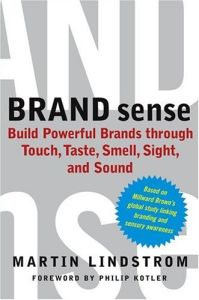Join getAbstract to access the summary!

Join getAbstract to access the summary!
Martin Lindstrom
Brand Sense
Build Powerful Brands through Touch, Taste, Smell, Sight, and Sound
Free Press, 2005
What's inside?
See it, feel it, touch it, hear it, even smell it: a sensory guide to making the branding experience more powerful.
Recommendation
Author Martin Lindstrom deserves credit for this original contribution to the overworked discipline of branding. He makes the case for involving all five senses – as well as emotions of nearly religious depth – in branding. While this may not work for every industry (it would be hard to make financial services tactile, aromatic or beloved, for example), it is a provocative idea that expands the branding discussion. getAbstract finds that Lindstrom makes a logical case for exploiting the power of the senses and emotions as he weaves in data based on a 24-nation study by research firm Millward Brown. The research explored “to what extent the religious factor – faith, belief and community – could serve as a model for the future of branding.” It also examined how taste, touch, hearing, smell and sight can create links between buyers and brands, and paid incisive attention to actual branding stories. Though some repetition crops up, Lindstrom generally keeps the book moving along with new facts that propel each chapter. He makes it clear that greater sensory emphasis could boost many brands – and, perhaps, the careers of many brand managers.
Summary
About the Author
Martin Lindstrom founded his ad agency at age 12. Today, it serves numerous international corporate clients. He publishes a weekly column on branding and has written several books, which have been translated into more than 15 languages.



















Comment on this summary